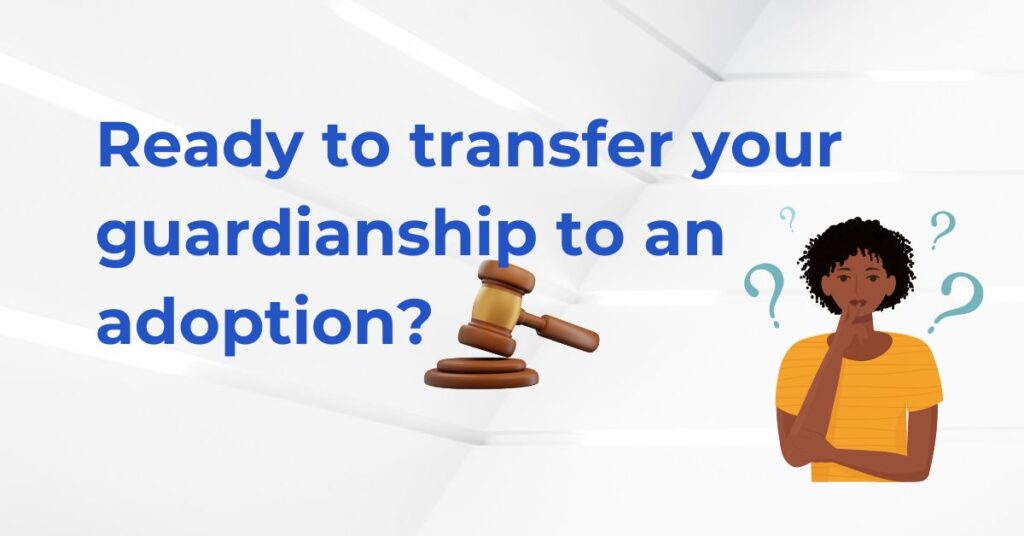Prefer to watch video? We’ve got you covered:
Transitioning from guardianship to adoption is a legal process that requires careful consideration and adherence to specific laws and procedures. In California, the process involves several steps and factors that must be taken into account. Here are some important topics to consider when going from a guardianship to adoption in California:
1. Understanding Guardianship: You will first want to begin by understanding the concept of guardianship in California. Guardianship grants someone legal authority and responsibility for a child’s care and well-being without terminating the parental rights of the biological parents.
2. Assessing Adoption Suitability: Determine whether adoption is the right path for your situation. Consider the child’s best interests, the stability of the placement, the biological parents’ willingness to terminate their rights, and the child’s relationship with the potential adoptive parents.
3. Termination of Parental Rights: In most cases, the biological parents’ rights must be terminated before adoption can occur. This can be done voluntarily through consent or involuntarily through court proceedings if the parents are deemed unfit or have abandoned the child.
4. Filing an adoption Petition: To initiate the adoption process, you’ll need to file an adoption petition with the court. This petition outlines your intent to adopt the child and includes information about the biological parents, the child, and the prospective adoptive parents.
5. Home Study: A home study is a crucial part of the adoption process. It involves an assessment of the adoptive parents’ suitability and the home environment to ensure it meets the child’s needs. A licensed social worker will conduct interviews, home visits, and background checks.
6. Notice to Interested Parties: California law requires that all interested parties, such as the biological parents, be notified of the adoption proceedings. They have the right to consent or contest the adoption.
7. Adoption Hearing: After completing the necessary paperwork and meeting all the requirements, a court hearing will be scheduled. The judge will review the case, consider the child’s best interests, and make a decision regarding the adoption.
8. Post-Adoption Services: After the adoption is finalized, you may be eligible for various post-adoption services, such as financial assistance, counseling, or support groups. These services can help with the child’s adjustment and overall well-being.
It’s important to note that the adoption process can vary depending on individual circumstances, and it is advisable to consult with an adoption attorney who practices adoption law in California to ensure you navigate the process correctly and legally. If you are interested in hiring an adoption lawyer, we ask that you contact the law offices of Chirnese L. Liverpool at (818) 714-2200 today.


